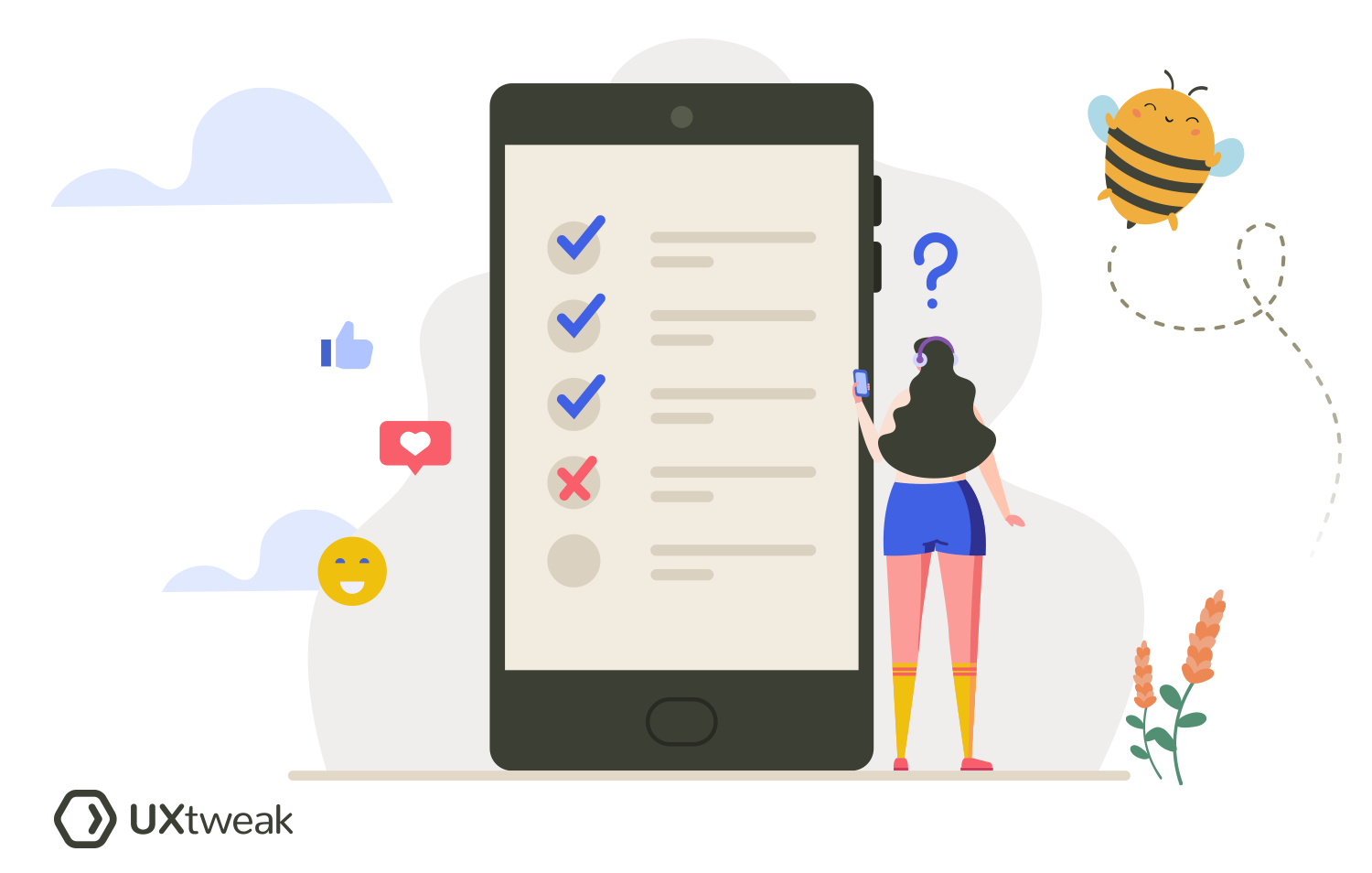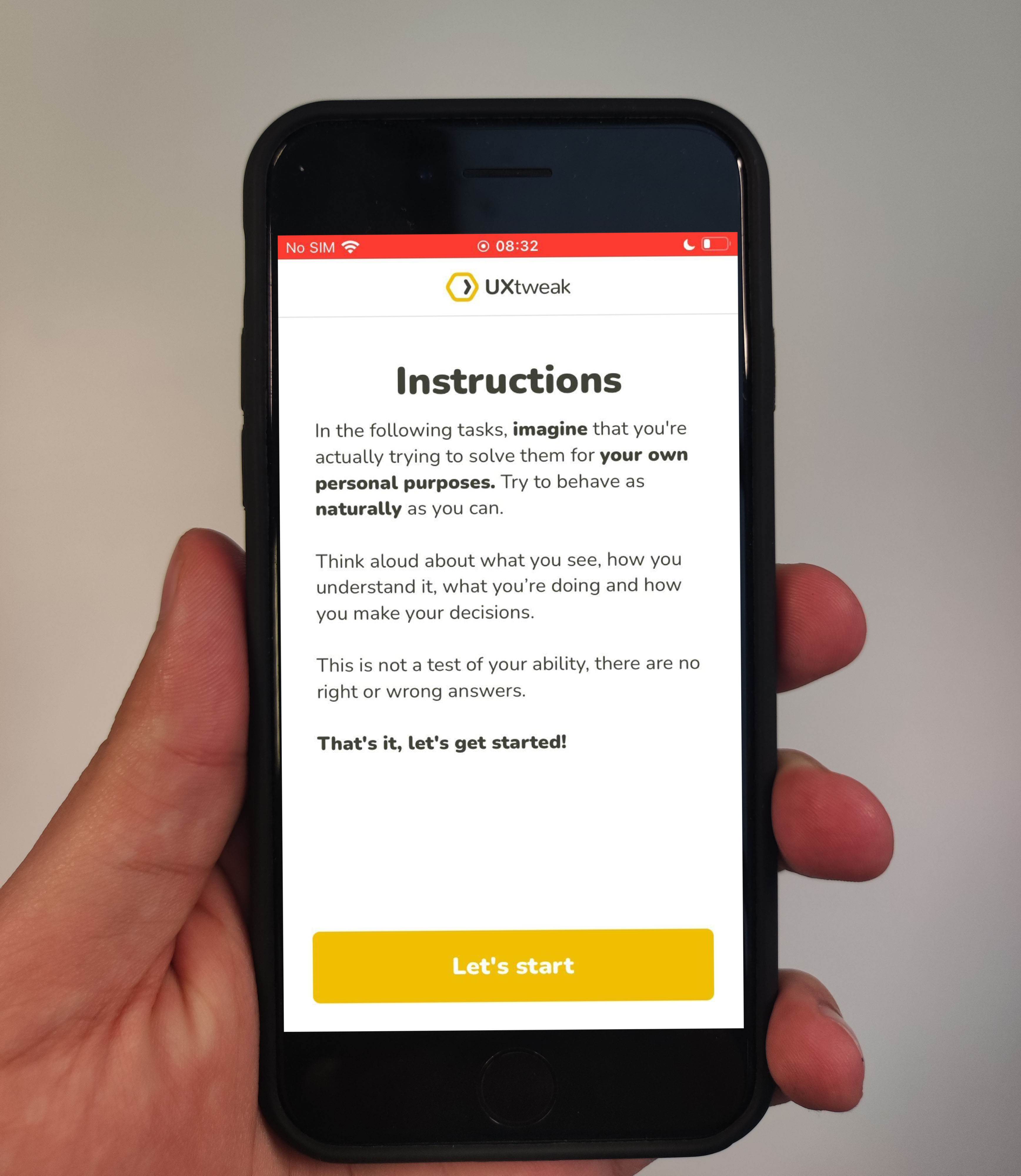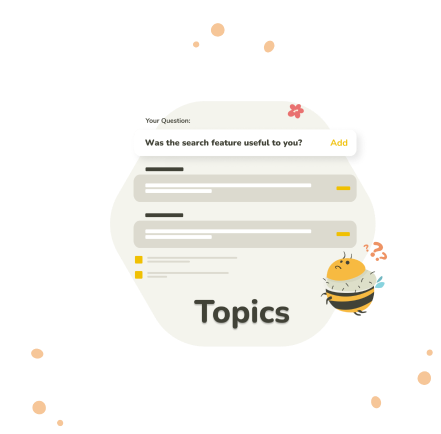Collecting user feedback is essential for companies that want to exceed their customers’ expectations and provide the best possible user experiences. But how to capture user feedback and what channels to use?
👉Below, we explain everything you need to know about user feedback collection methods.
Why is collecting user feedback important?
Collecting user feedback is crucial to understand the needs, pain points and preferences of your future users or current customers. By asking users what they like, dislike, and want to change about your product, you’re gathering precious data to inform future design decisions and create a user-centered product that people love.
Moreover, collecting feedback from users demonstrates that you value their opinions and are committed to providing them with the best possible user experience. It builds trust and engagement, leading to customer loyalty and retention.
Learn more about User Feedback And Why It’s Important.
7 most effective ways to capture user feedback

Let’s take a look at some of the most popular ways to capture user feedback:
Surveys
Surveys are one of the most popular ways to collect user feedback due to its versatility and reactivity. It’s a fast and effective research method that can help you gather both qualitative and quantitative feedback from users. Thanks to all the various question types available in modern survey tools you can create questionnaires to collect user feedback metrics such as NPS, CSAT and others, but also gain quantitative insight into users’ needs, wants and preferences.
Surveys are great because they give you an opportunity to reach a large number of users and therefore, generate accurate statistics. They are easy to administer through various channels and don’t usually take much time to complete, which is a win-win for both you and your customers. However, surveys may not be the best option for complex research studies as they often lack depth and context, as well as may be a subject to response bias.
In most cases though, surveys prove to be a quick and effective way to capture user feedback and generate enough insights for future improvements.
Learn how to write good User Feedback Questions for your survey [with Examples]
Interviews
Interviews involve one-on-one conversations with users and can be conducted either in-person or remotely. User interviews are a great way to capture qualitative feedback, empathize with users and understand their needs and problems better.
The biggest benefit of this method is that you’re able to personally talk to users about their unique experiences with your product and ask to elaborate on certain responses, when something is not clear. By carrying a conversation in a friendly manner you, as a researcher, create a comfortable environment for them to share their genuine opinions.
Interviews can be costly to organize, however, most of the time the insights obtained from them are 100% worth the money. When preparing for your interview, focus on open ended questions that motivate participants to think and talk freely. Try to avoid bias and make sure that your interview is moderated by a skilled researcher.
Usability testing
Usability testing is a user feedback collection method based on giving your users tasks to perform with the product and watching them do it. It’s a proven method to uncover usability issues, confusion points and other roadblocks that people face when using your product.
Usability testing gives you an opportunity to see how users interact with your website or app, what works and what doesn’t, and get feedback on its design and specific features. The great thing about usability tests is that you don’t need a big pool of participants to conduct an insightful study. Most of the time just a couple of tests will be enough to spot critical issues and understand how users feel about the product.
With UXtweak you can test your product’s usability throughout the whole design process: from prototype to production. We provide tools to help you test websites, mobile applications, design prototypes and even perform competitive usability testing on your competitor’s products.
Try UXtweak’s Usability Testing Tool as a respondent in these demos:
Integrated feedback forms
Integrated feedback forms are one of the ways to capture user feedback directly within a product. They are typically embedded within the user interface and can be triggered by specific actions of users, such as completing a certain task or when they are about to abandon a page or feature.
You’ve definitely seen them in the form of popup questionnaires, rating widgets, or just questions asking about your experience after buying a product. Integrated feedback forms are considered to be especially accurate and relevant as they collect the feedback “on the spot”, right when the user is interacting with your website or app.
While these forms provide valuable real-time feedback, they can sometimes lack context and not be enough to drive meaningful conclusions. Poorly designed pop ups are also risking to annoy users and disrupt the user experience, so make sure to use integrated feedback forms mindfully.
Customer Support Interactions
Customer support interactions are a valuable source of user feedback as they provide direct communication between product teams and the user when they are experiencing a problem. By reviewing those interactions, product teams can identify recurring issues and prioritize them in future improvements.
This type of feedback is usually collected through customer service channels such as live chat, email, phone or other means of communication. The best thing about customer support interactions is that they help to quickly pinpoint major issues that concern users at the moment and make it easy to prioritize urgent fixes. This is often the way to uncover hidden usability issues that were overlooked during testing.
The only downside of this method is that it only allows you to collect feedback from those users who require assistance, but not the general target audience of your product. That’s why this user feedback collection method is often used in combination with others.
Social Media
By default, social media is a place for people to share their thoughts and opinions and your clients are no exception. Monitor your company’s social media accounts as people like to share their feedback about products there. It’s a great way for you to engage with your customers, provide direct responses to their questions and suggestions and get to know them better.
Social media is also a perfect place to watch out for emerging trends in your industry and current user pain points. Some of the most popular social media platforms for that matter are Instagram, LinkedIn, Facebook, Twitter and others. Make sure to focus your attention on the right platforms, the ones that your target audience is interacting with the most.
User Feedback Software
User feedback software are tools that help you collect, analyze and manage different types of feedback in a centralized location. They make it easy to monitor new user feedback across different platforms and react to it quickly.
There are all kinds of user feedback software out there that cater to different goals of product teams. Take your time and those the one that corresponds to your specific needs and budget. This will save you tons of time and money in the long run, providing a place to easily manage all types of user feedback about your product.
When to capture user feedback

Let’s take a look at some of the most common stages of user’s journey when you should collect user feedback:
1.) Discovery phase
This is the very beginning of users’ interaction with your product. At the discovery phase they are just becoming aware of your product or service and deciding on whether or not to use it. This is also the phase when they are looking at alternative options, comparing you to the competitors.
Here, you want to know more about their first impressions and opinions of your product. The best way to capture user feedback at this stage is through integrated website or landing page surveys that ask users about their initial impressions, expectations, and whether they find the information they’re looking for.
2.) Onboarding Phase
During the onboarding phase users are learning how to use your product or service. Capturing feedback at this stage can help you identify areas where they are struggling and improve the onboarding experience.
The optimal way to collect user feedback at this stage is through in-app or email surveys that ask users to share opinions about their onboarding experience, whether they were able to complete tasks easily, and whether they needed additional help. These surveys can help identify areas of confusion or frustration that may be preventing users from fully engaging with the product, and help to improve the onboarding process for future users.
3.) After users convert
This is when a user has successfully completed a certain task or transaction (e.g. made a purchase from your e-shop). After completing this action they are likely to have strong opinions about their experience, know if it satisfied them or confused at some point.
The optimal way to collect user feedback at this stage is through post-conversion surveys that ask users about their experience, whether they encountered any issues or challenges, and whether they would recommend the product or service to others. Those are usually sent automatically via email.
To increase the response rate of such surveys, personalize them and address directly to the person who completed the transaction. This will show them that you value both their purchase and feedback and are committed to ensuring the quality of their user experience.
4.) After a users gets help
Collecting user feedback at this stage is important for constantly improving the quality of your customer support. Your users have just reached out to the support team because of a frustrating experience they’ve encountered, which makes them more likely to share feedback as their emotions are still fresh in their minds.
Ask them if their issue was solved, if they received high-quality assistance and answers to all of their questions. Offer them to rate how satisfied they are with the overall quality of support provided. You can do that by sending a follow-up survey via email.
5.) When a user changes/cancels subscription
Examples of this stage is when a user upgrades or downgrades a subscription plan, deletes the account completely or just cancels their paid subscription. These can happen for various reasons and your job is to find out why.
It’s an important phase where users may provide valuable feedback on why they are leaving and what could have been done to retain them. You can find it out by sending exit surveys. They will help to identify areas of improvement in retention strategies and inform efforts to win back lost customers.
What to do after you capture user feedback?

After collecting user feedback you’re left with lots of data to make sense of. By approaching the analysis process strategically you’ll be able to prioritize the right issues and make feedback implementation a breeze.
Here’s how to do that:
Categorize: review the feedback you’ve received from various users and categorize similar inquiries together. To better organize your insights, try methods like affinity mapping.
Prioritize: The rule of thumb is to always focus on the most critical issues first. Take your time to prioritize issues based on their impact on your product.
Analyze: Analyze the issues, try to identify what causes them and how you can solve the problem.
Create an action plan: Create a process that facilitates user feedback implementation into the development process. Set specific goals and timelines for implementing solutions.
Wrapping up
As we can see there are tons of ways to capture user feedback. Choose the one that suits your budget and corresponds to the needs of the project. We hope this guide gives you a clear overview of each method’s pros and cons as well as the different phases when you can collect feedback from users.
And if you’re looking for a handy tool to help you, UXtweak is here for you!
Register for your free account and use it to collect user feedback on your product! Create all kinds of surveys, run usability tests and so much more🤩




